Photo: Wholesale Loads of Mexican Baskets
Photographer: C.B. Waite
This particular photograph depicts three Mexican men carrying massive loads of Mexican baskets on their back. The men are not particularly large and their stance suggests that the large quantity of baskets are weighing heavily on their bodies. Their facial expressions would suggest that they are under enormous stress and their work load is very heavy. It can be deducted from this photograph that these men must be laborers or slaves who are relatively low in Mexican society. These men appear to be native to Mexico, but the description does not definitively say whether or not they are native peoples of Mexico. This issue raises the question of slavery as a practice in Mexico was as commonplace as it was in other parts of the colonial world, as it is more commonly associated with regions like the Southern United States. This photo clearly demonstrates massive pressure on these men to accomplish the sale or transport of these baskets. There are also other questions that arise upon viewing the photograph. The treatment of colonial subjects as inhuman is possibly demonstrated in this photo, as no human should be expected to carry this many baskets on their back. However, there is no explanation as to whether or not this is a Mexican custom or normality of some kind. It is up to the modern viewer to decide in this particular case.

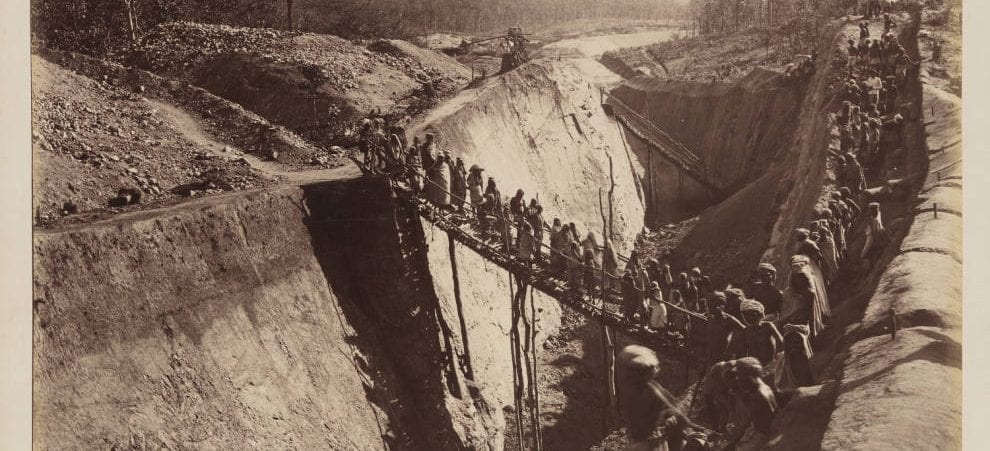
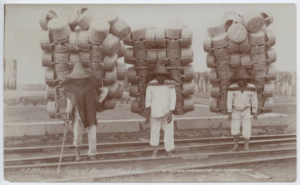





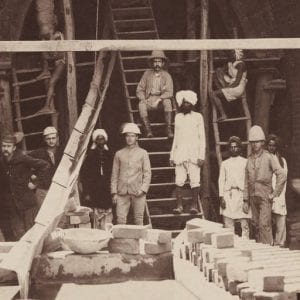

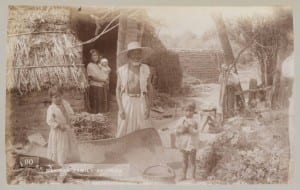
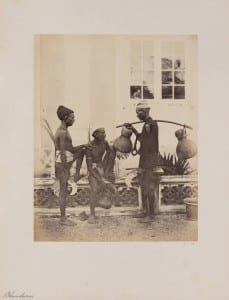


 This photo tells a lot about what was important to Native Mexicans in colonial Mexico. Based on the surplus of utensils and plates, this family seems to be economically stable. However, the family’s clothing, most notably the lack of shoes, shows that this the family is by no means wealthy. All of this tells us that money was either not of priority to these people or it was made unobtainable by the colonists. There is truth in both of these. This photograph shows how important family is to these people. It also provides a striking contrast between Mexican families and European families in Mexico. These men are spending time relaxing and dining with their family which shows that they truly care about their children and wives. Meanwhile, the European men who lived in Mexico only cared about glory and gold, so much so that they left behind their families to sail across the world to explore and start new families. This glimpse of every day life for colonial Mexicans shows the Mexicans resiliency and ability to cherish the important things in life even when they were subject to oppressive conditions.
This photo tells a lot about what was important to Native Mexicans in colonial Mexico. Based on the surplus of utensils and plates, this family seems to be economically stable. However, the family’s clothing, most notably the lack of shoes, shows that this the family is by no means wealthy. All of this tells us that money was either not of priority to these people or it was made unobtainable by the colonists. There is truth in both of these. This photograph shows how important family is to these people. It also provides a striking contrast between Mexican families and European families in Mexico. These men are spending time relaxing and dining with their family which shows that they truly care about their children and wives. Meanwhile, the European men who lived in Mexico only cared about glory and gold, so much so that they left behind their families to sail across the world to explore and start new families. This glimpse of every day life for colonial Mexicans shows the Mexicans resiliency and ability to cherish the important things in life even when they were subject to oppressive conditions.